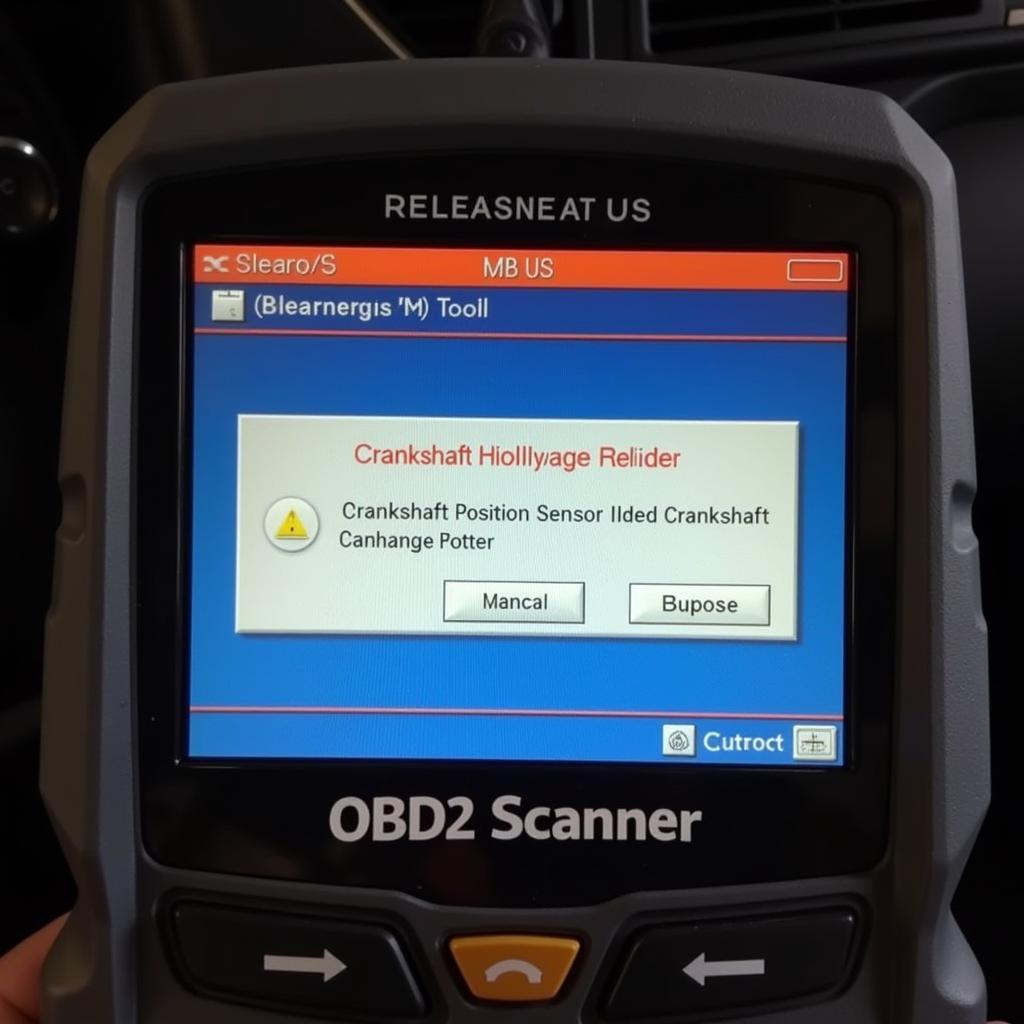Your cart is currently empty!

Crankshaft Position Sensor Relearn: OBD2 Scanner to the Rescue
The crankshaft position sensor is a vital component of your car’s engine management system. When it fails, your vehicle might experience difficulty starting, rough idling, or even a complete stall. Sometimes, simply replacing the sensor isn’t enough. You might also need to perform a crankshaft position sensor relearn using an OBD2 scanner. But why is this necessary, and how does it work?
Why Relearn is Necessary
Your car’s computer, also known as the Engine Control Unit (ECU), uses data from the crankshaft position sensor to manage various engine functions like fuel injection and ignition timing. When you replace the sensor, the ECU needs to relearn the new sensor’s signal to ensure optimal engine performance.
 Crankshaft Position Sensor Location
Crankshaft Position Sensor Location
How an OBD2 Scanner Helps
This is where an OBD2 scanner comes into play. It acts as a communication bridge between you and your car’s ECU. With the right OBD2 scanner, you can access the ECU and command it to relearn the crankshaft position sensor’s signal.
 OBD2 Scanner Relearning Process
OBD2 Scanner Relearning Process
Choosing the Right OBD2 Scanner
Not all OBD2 scanners are created equal. Basic code readers might not have the functionality to perform a crankshaft position sensor relearn. For this task, you need a more advanced scanner with bi-directional communication capabilities, meaning it can both read and send commands to the ECU.
“Choosing the right OBD2 scanner is crucial for DIY car maintenance,” says automotive expert John Davis. “Investing in a scanner with advanced functionalities like bi-directional communication and sensor relearn capabilities can save you trips to the mechanic and empower you to tackle more complex repairs.”
Crankshaft Position Sensor Relearn: A Step-by-Step Guide
Before you begin, make sure you have the correct replacement crankshaft position sensor for your car model and an OBD2 scanner with the required capabilities.
- Connect the OBD2 Scanner: Locate your car’s OBD2 port (usually under the dashboard on the driver’s side) and plug in your scanner.
- Turn on the Ignition: Turn the ignition key to the “on” position but don’t start the engine.
- Access the Relearn Function: Navigate through the OBD2 scanner’s menu to find the “crankshaft position sensor relearn” or a similar function. The exact wording might vary depending on your scanner model.
- Follow the On-Screen Instructions: The scanner will guide you through the relearn procedure. This usually involves specific actions like starting the engine, letting it idle for a certain period, or raising the engine speed.
- Verify Relearn Completion: Once the process is complete, the scanner will usually display a confirmation message. You can also check if any error codes related to the crankshaft position sensor are cleared.
 Successful Relearn Confirmation
Successful Relearn Confirmation
Still Having Trouble?
If the relearn procedure is unsuccessful or you’re uncomfortable performing it yourself, it’s always best to consult with a qualified mechanic.
Conclusion
Performing a crankshaft position sensor relearn using an OBD2 scanner is a crucial step after replacing the sensor. This process ensures the ECU recognizes the new sensor and functions correctly, leading to optimal engine performance and a smooth-running vehicle. Choosing the right OBD2 scanner can empower you to take control of your car maintenance and save on costly repairs.
FAQ
1. Can I drive my car without doing a crankshaft position sensor relearn?
It is not recommended to drive your car without doing a crankshaft position sensor relearn as it can lead to poor engine performance and potential damage.
2. How long does the relearn procedure take?
The relearn procedure usually takes a few minutes.
3. What if the relearn procedure fails?
If the relearn procedure fails, it could indicate a problem with the new sensor, wiring, or the ECU itself. It’s best to consult a mechanic in this case.
4. Do I need to disconnect the battery before replacing the crankshaft position sensor?
While not always required, disconnecting the battery is generally a good practice when working on electrical components in your car.
5. How often should I replace my crankshaft position sensor?
The crankshaft position sensor doesn’t typically have a scheduled replacement interval. However, if you experience symptoms of a failing sensor, it’s crucial to get it checked and replaced if necessary.
Need help?
Contact us via WhatsApp: +1(641)206-8880, Email: [email protected]. We have a 24/7 customer support team.

Leave a Reply